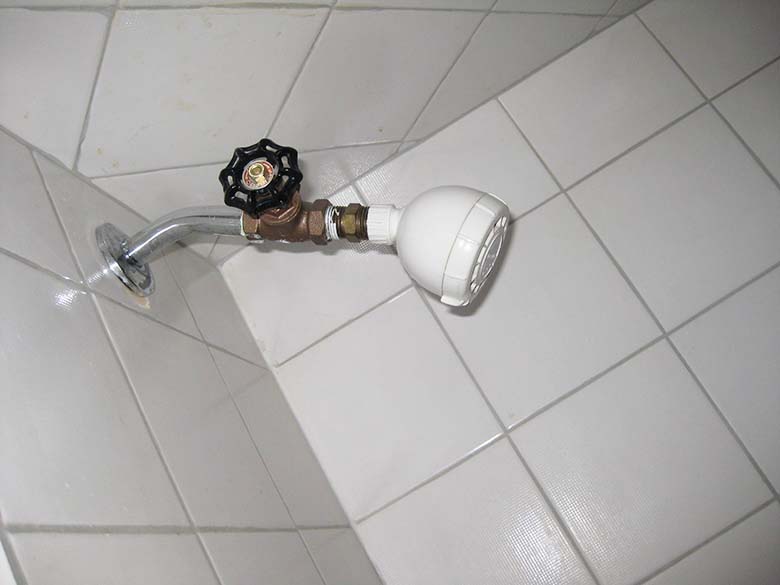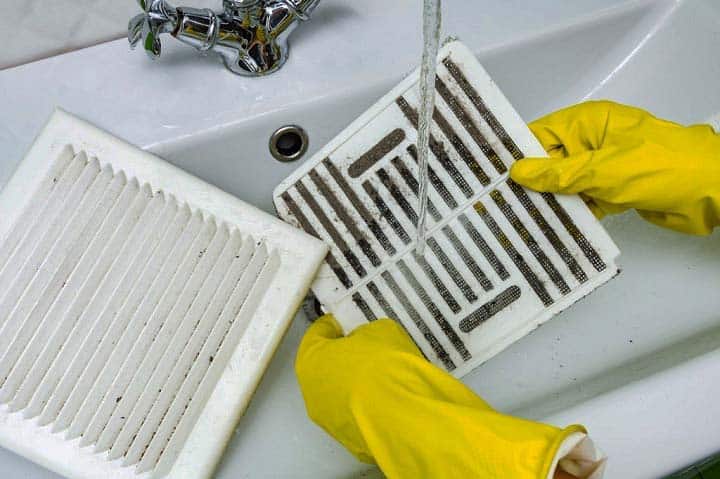Showers are where we bathe, relax, and may even preplan our future moves. Thus, showers are an integral part of our modern-day lifestyle. However, we use the shower as it comes. We hardly know how a shower system works and its parts. For instance, people need clarification about whether showers have shut-off valves.
So, do showers have shut-off valves? Also, how do you stop a shower while repairing it?
People often ask these questions, and we understand their point. Showers are more complex than a sink and bathroom water supplies. Thus, understanding the basics of a shower and its working process helps us to use and maintain it better.
Hence, we will go through the basics of showers, their shut-off valves, ways to stop them, and maintenance guidelines.
Do Showers Have Shut Off Valves?
Showers generally don’t have any shutoff valves. You will rarely see any showers with shut-off valves. Kohler, Moen, High Sierra, and other prominent shower and showerhead brands don’t include any shut-off valves in their package.
Also, according to the International Residential Code (IRC P2903.9.3), the shower and its water supply line don’t need any shut-off valves. The Residential Edition of the Florida Building Code (FBC) has released a similar statement. Since the residential and building codes don’t ask for any shut-off valves for the water supply lines, you will rarely find them these days.
Nonetheless, older homes had problems with the water supply system. So, a few older homes had shut off valves for their showers. It is located at the back of the access panel of the water line in the wall. PEX piping at newer homes may also have shut-off valves for the shower’s water supply line. You will find it in the manifold of your home wall.
The manifold is like the electronic control panel at your home. So, this box is a central water distribution system. PEX water lines will have the shower shut-off valves in this manifold. However, it will only be in some homes. Only a few newer homes with PEX piping and manifold system will have the valves.
If the PEX piping and manifold have shut-off valves for showers, there will be two valves. One connects to the hot water line, and the other to the cold water supply line. When you repair the shower or its related parts, you can access the manifold and turn the valve to stop the water supply.
Where Is the Water Shut off Valve for a Shower
Although newer homes rarely have shower shut-off valves, older homes have them. You will need it to find the shut-off valves while working with the shower system. You must first turn off the water supply when the shower gets damaged and needs replacement or repair. And for this, you must know the location of the shut-off valves.
Depending on your home and apartment type, the shut-off valve will be in different locations. So, let’s dig deep into the shower shut-off valve location.
Modern apartments:
These days, apartments have complex and different types of water supply systems. So, finding the shut-off valve in apartments can be incredibly tough. Usually, there’re two familiar places for water shut-off valves for showers in modern apartments. These are:
- Underneath the kitchen sink
- Below your bathroom sink
It will be constructive and easily accessible if the shut-off valve is located in these two places. You can access the shut-off valve beneath the bathroom or kitchen sink. However, the communal laundry home will accommodate the shut-off valve in many homes.
It would help if you looked behind the laundry room utility closet to find the shut-off valve. Nonetheless, the utility closet will be locked. So, accessing it requires you to contact the apartment or building manager. They will unlock the utility closet. Then, you may reach behind the closet and turn off the valve for any repair works.
Standard homes:
Depending on old and new home setups, the shut valve will be in different locations. Usually, you will find it in outdoor locations. The easiest way to find the shut-off valve is to follow the water meter. As you follow it straight, it should lead you toward one of the exterior walls of your home. So, you must check the home’s water supply system at the wall. Sometimes, it might be behind the access panel.
You must circle around the home when you try locating the shut-off valve for showers. Also, carefully inspect the exterior walls. You should also feel the wall with your hands. Following this easy step, you should quickly locate the shut-off valves for showers.
If you are still looking for the shut-off valve in exterior locations, try searching for it inside the home. Usually, it will be behind the bathroom closet. Also, modern-day homes will have a shut-off valve in the laundry room or basement.
So, the valves for showers in homes may be in the following locations:
- Basement
- Laundry room
- Behind the bathroom closet
- Control panel at the exterior wall
Why Is There No Shut off Valve for Shower
Shut-off valves are common for different water supply lines in homes, commercial and residential spaces. So, it’s surprising to see no shut-off valves for showers. You may want to know the reason for the absence of shut-off valves in showers.
There’re multiple reasons for it.
Money-saving deal:
Apartment owners and builders will continuously pursue ways to save money on their construction. One of the easiest ways to save money is to avoid shut-off valves. Most builders will exclude the shut-off valves for the shower system.
The builders’ comment that shower valves to turn it off isn’t necessary. So, they don’t include it because it isn’t easily accessible for home and apartment owners. It doesn’t even add any convenience.
Inability to access the shutoff valve:
Another reason to exclude the shut-off valve is its difficulty reaching it. Mostly, shut-off valves will be underneath the finished wall or drywall. So, even if the builder places the valve to control flow, you can’t access them.
You must break the drywall or finished wall. It will be a costlier process. So, it would be more convenient for the homeowners to add the shut-off valves. Even if it is underneath the drywall, you can’t access it. So, it, more or less, remains useless.
Building codes don’t require shut-off valves:
The primary reason for showers not having shut-off valves is the federal and state building codes. We have already mentioned that International Residential Code (IRC P2903.9.3) and Florida Building Code (FBC) mentioned that showers don’t require any shut-off valves. Also, federal laws on building codes and design have yet to enforce the inclusion of valves.
Henceforth, builders and architects exclude the valve. It helps them make the water supply system easily without any complexity.
Tips on Adding Shut-off Valves to Shower
Many homeowners might want to add shut-off valves on their showers. Of course, adding a valve with the shower’s water line is possible for better control. Also, it is helpful to maintain and repair the shower whenever necessary.
You will need the following items:
- 1/2″ Shut Off Valves
- Utility Knife
- Copper Pipe Cutter
- Copper Pipe Cleaning Brush
After assembling all the required tools and parts, you start installing the shut-off valves.
- First, preplan the location of the shut valve. It must be in an easily accessible place so you can turn it on and off whenever necessary. Also, turn off the main water supply line in your home. It allows you to work with the dry water lines and avoid mess.
- Once you have planned the valve location, work with the copper pipe. You need to cut the copper pipe with proper measurements so it fits into the water supply line. There will be a lip at the front of the pipe. You must also cut it plainly, or the copper pipe won’t fit.
- Now, use a cleaning brush and wipe off the residues from the copper pipe mouth. Also, clean the inside of the copper pipe. If you don’t have a brush, you can use a harsh scrubber and dust to clean the pipe. You need to clean the first 1-inch of the pipe.
- As you have placed the pipe in its location, add it to the main supply line. Secure the supply line connection with Teflon or plumbing tape.
- Finally, attach the shut-off valve to it. Ensure the connection is secure, and check the valve before finishing the task.
As the discussion suggests, showers don’t have shut-off valves usually. You may see the shut-off valves in older homes and PEX pipe installation. Building codes don’t require the shower shut-off valve inclusion for homes. Also, builders avoid it to save their money on construction.
However, many apartments may have the valve. You will find it in the apartment’s communal laundry room or basement. For homes, it may be underneath the bathroom and kitchen sink. You may add the valve following five easy steps in our guidelines. It will help you repair and maintain the shower quickly.
I am James Martin, An professional plumber with more than 16 years of experience. The main purpose of my writing is to share my experiences of helping others. Be with me and explore bathroom plumbing, installation, cleanness ideas, and many more.




